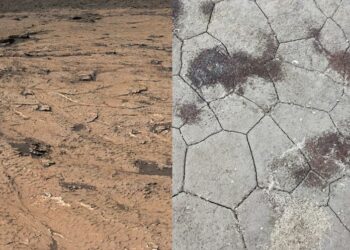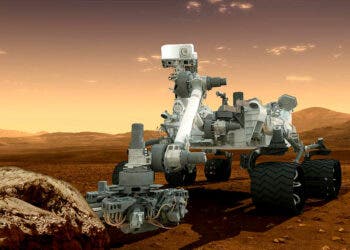The much discussed soil analysis samples taken by Curiosity have finally been made public by NASA at the recent American Geophysical Union annual meeting in San Francisco. The findings are indeed exciting, as scientists have read the presence of organic compounds – critical prerequisites for the both the present and past existence of life. However, scientists have yet to be fully %100 sure these hydrocarbons are indeed native to Mars or just pesky contaminants brought by Curiosity from Earth.
“We have no definitive detection of Martian organics at this point, but we will keep looking in the diverse environments of Gale Crater,” said investigator Paul Mahaffy in a NASA release.

What’s interesting is that the soil containing the carbon compounds wasn’t by far a prime target in the organics search – Curiosity‘s main mission. The soil was simply scooped to clean out the rover’s mobile laboratory and soil-delivery systems, and act as a test for the instruments. A much better chance of finding organics on the Martian surface is by looking at clays and sulfate minerals known to be present at the base of Mount Sharp, in the Gale Crater. All for the better, since if these findings are indeed confirmed to be of native origin, then carbon based compounds should be wide spread throughout the planet.
Carbon: the element of life
The whole announcement came after entire weeks of speculations after NASA officials announced that they’re on the brink of a discovery set for the “history books”, later disclaimed as simple allusions referring to the Curiosity rover mission as a whole.
“When this data first came in, and then was confirmed in a second sample, we did have a hooting and hollering moment,” said project scientist John Grotzinger.
“The enthusiasm we had was perhaps misunderstood. We’re doing science at the pace of science, but news travels at a different speed.”
The findings of organic compounds – different combinations of carbon, hydrogen, and chlorine – need to be replicated in other samples at other locations and further efforts intended to rule out the possibility of contaminants needs to be made. Only four months in into its mission, Curiosity still has a lot of time on its hands. I have the feeling we’re just barely scratching the surface of what Curiosity will have to offer for science in the near future.
In other news, at the same American Geophysical Union (AGU) Fall Meeting, the world’s largest annual gathering for Earth and planetary scientists, NASA officials have announced that they are preparing for a new rover launch aimed at the Red Planet in 2020. The new rover will share many aspects of Curiosity’s design






